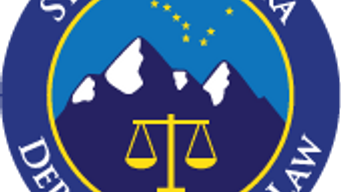If you're promoting your airline on social media, what do you think are some of the most effective marketing techniques? How about, "we've got less legroom" or "we'll probably lose your bags"? Or how about, "if we crash the plane, you're least likely to die if you sit in the back of the plane"?
Believe it or not, that's how KLM India promoted the airline last week on Twitter. As part of #TuesdayTrivia, the airline Tweeted, "the fatality rate for the seats in the middle of the plane is the highest. However, the fatality rate for the seats in the front is marginally lesser and is least for seats at the rear third of a plane."
Social media quickly responded with horror and surprise, and the airline soon apologized for the Tweet. KLM India wrote, "We would like to sincerely apologise for a recent update. The post was based on a publically available aviation fact, and it isn't a @KLM opinion. It was never our intention to hurt anyone's sentiments. The post has since been deleted."
These kinds of social media missteps don't just fly by, however. Not only do they attract great (negative) attention on social media, but they make national news. For example, this Tweet was reported on by The Washington Post, National Public Radio, and many other media outlets in the United States and around the world. And it wasn't the only time that KLM attracted negative attention for its social media in the last week. KLM also received widespread criticism, and media attention, for its Tweet telling passengers that they may be required to cover up when breastfeeding if other passengers complain.
What are some lessons to be learned from KLM India's latest social media snafus? Here are a few thoughts.
- Don't keep your head in the clouds about social media. What you say on Twitter and on other social media platforms can easily attract significant, negative attention. Small problems become big ones in social media very quickly.
- You wouldn't allow a flight attendant to work on board without being trained first. The same should be true for those people that are managing your social media. Before posting on a brand's behalf, people should be trained about the brand's voice and what types of content are appropriate for the brand.
- While some small airports don't have control towers, big ones do -- and you can't land without permission. You'll need to decide what your control processes are going to be as well. Are people going to be authorized to post on the brand's behalf in real-time, or will social media posts need to be approved in advance like other advertising materials are?
- There's a reason that airlines have safety information cards in each seat back pocket. People need instructions about safety. The same is true for your social media team. Check to make sure that you have proper social media guidelines in place that give your team the rules of the road for your brand.
- If you're flying into international airspace, you know that different rules apply. The same is true for social media. Standards about what may be appropriate advertising content can vary widely among countries. Don't assume that something that seems funny or acceptable in one jurisdiction is going to be received the same way somewhere else. And, when you're posting in social media, you should consider who the post is directed to, and who may see it, and consider whether you're taking into account applicable local standards.
If you take these steps, you should be able to sit back, relax, and enjoy the rest of your day.





